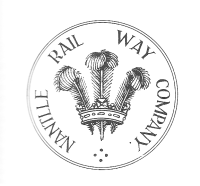 A mere passing mention in many accounts, the Nantlle Railway seldom features prominently in its own right. But in opening in 1828, it actually predated the Festiniog Railway by several years, yet has generally attracted less attention. Admittedly the Nantlle only survived in its entirety until 1867, while the Festiniog continued to operate almost into the preservation era. It died when modern photography was only in its infancy so images of it are almost non-existent. It never employed steam traction, and thus lacked the popular appeal of many other lines. Perhaps also it lacked the pioneering spirit and individuality of the Festiniog.
A mere passing mention in many accounts, the Nantlle Railway seldom features prominently in its own right. But in opening in 1828, it actually predated the Festiniog Railway by several years, yet has generally attracted less attention. Admittedly the Nantlle only survived in its entirety until 1867, while the Festiniog continued to operate almost into the preservation era. It died when modern photography was only in its infancy so images of it are almost non-existent. It never employed steam traction, and thus lacked the popular appeal of many other lines. Perhaps also it lacked the pioneering spirit and individuality of the Festiniog.
The line was designed by Robert Stephenson to bring slates down to the sea economically from the Nantlle quarries in the face of the threat to business from the larger Penrhyn and Dinorwic quarries. The shareholders in the railway company which built the line were mainly quarry owners in the Nantlle area. However the railway company did not operate the line, instead the operator paid the company for the right to operate the line and in turn collected tolls from the users. Unfortunately the interests of the company and the operator were not always aligned and this divergence assisted the Carnarvonshire Railway in gaining control of the line in 1867, much to the detriment of the quarry owners who built it. A further factor in its demise was its unusual 3ft 6″ gauge which constantly hampered operations, as it was compatible neither with the 2ft gauge quarry railways, nor with the burgeoning standard gauge network. Its meandering route owed more to the canal age than the railway age, limiting rolling stock to short wheelbase vehicles and restricting speeds to little more than walking pace.
At its height the line was carrying about 20,000 tons of slate per year, bringing in tolls of 3d to 6d per ton mile. Trains of 4-5 wagons with double flanged wheels travelled at 2-3 mph, drawn by a horse, mostly worked by a man and a boy. Rails were of wrought iron and relatively light in weight. There was no signalling, and trains proceeded from passing place to passing place by line of sight.Originally there were some 22 passing places. If two trains met head on between passing places there could be an interesting debate about who should back up.
Passenger trains were gradually introduced and for these trains to operate at a worthwhile speed of 6-7 mph, a timetable had to be imposed to provide clear paths for them. Eventually goods trains became restricted to convoys in the early morning and evening, and most of the passing places were removed.
The section of the line at the Nantlle end continued in use after 1867, acting as a feeder to the standard gauge line. The final length only closed in 1963 and had the distinction of being the last line on British Railways to use horse traction.